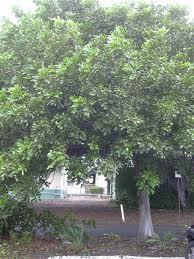Landscape Architecture for Landscape Architects › Forums › PLANTS & HORTICULTURE › Big Box Parking Lots
- This topic has 1 reply, 8 voices, and was last updated 11 years, 9 months ago by
 Jason T. Radice.
Jason T. Radice.
-
AuthorPosts
-
April 19, 2012 at 4:57 pm #157788
 Daniel KovachParticipant
Daniel KovachParticipantWhat are your success stories for planting in the asphalt deserts of large commercial parking lots. What plants compete with soil compaction, small planting spaces, heat gain and shopping carts?
April 19, 2012 at 6:29 pm #157801 Jason T. RadiceParticipant
Jason T. RadiceParticipantThere are an awful lot of variables to make this type of planting work, not just the plant material.
I work in the mid-atlantic, so for large shade trees, I stick with deeper rooting hearty forest/pioneer trees like Tulip Trees, London Planes, certain oaks (willow oak does well here) and birches.
I try to stay away from top-rooting trees like maples, and uterly detest Zelkovas, which have been browning out and the tops dying off here for some reason. They really are not a very good tree, anyway.
Maples, despite being one of the most often planted parking lot tree, are also one of the worst for that application, unless you have HUGE islands or plant them on the edges of the lot where they have room to root properly. They are top rooting, so they tend to be more easily damaged by compaction as well the soil drying out quicker closer to the surface. Many varieties (espcially Acer Rubrum) have very thin bark that tends to split given the extreme temperature differences around parking lots and thier unbuffered exposure to wind in the winter. Also, the underside of the leaves tend to burn up pretty good in the hot summers. There are newer vaireties that are better suited to the task, especially with bark split, but I have yet to see a maple variety that is really successful in this harsh environment without a large percentage of losses.
April 20, 2012 at 12:19 am #157800 Nicholas YoungParticipant
Nicholas YoungParticipantHere in Australia we use the cupaniopsis anacardioides – Tuckeroo…alot, almost every new carpark space for shopping centres and commericial spaces have them. They are normally planted as a 100lt when construction of the carpark is taking place, so there is still plenty of growing room for the roots. If you carpark is existing it may need a larger excavtion (almost one car space) to recondition the soil underneath, then new re compaction material and asphalt.
 April 22, 2012 at 1:50 am #157799
April 22, 2012 at 1:50 am #157799 Les BallardParticipant
Les BallardParticipantThere certainly are problems around the world with this. No-one really wants to provide a green space for any reason save making it more conducive to dropping your wallet and leaving as soon as possible. It only needs a little thought, however, to actually attract shoppers with planting, even if they do not start out that way.
What I mean is a mini arboretum, perhaps with protected dearer foreign species from scriptures, or a show at a time of the year, or free food. People may not want an apple dropping through their screen nor, indeed, dyed guano or sticky sap on their cars and a mall will not want to provide juveniles with ammunition to start a war but soft fruits and small nuts is not a bad aim for providing free food. A friends group will even help with maintenance and cropping for free as well as delivery to, say, a school and an old folks home. Whatever wildlife can be planted, introduced or attracted also attracts human visitors and most trees will support a bird, bat, owl, bumble bee, small rodent or other box that maybe cctv can cover and provide a view of young on the nest, etc. The car parks for a mall and surrounds could easily support visitors amounting to a couple of classes of kids and a few parties of adults and kids a day. Leaflets can list trees, etc. and set trails to negotiate to take in sites and sights to include a jogging track with pace posts, trim trail and even a zipwire or jungle gallery in pre-existing trees.
In the UK, planting includes regular replacement of dead trees that have not been allowed to spread and with no irrigation, Stock has been obtained with hormone imbalances that cause leaves to go and stay a uniform muddy brown and not fall until pushed off by new growth. Companies make a profit attending to these things to include replacing waving palms in the atrium before they get too tall and often they retain ownership, trying to revive pants not given enough light or water off-site or just plain trashed by vandals of all ages. No-one wants bushes that odd folk can lurk in or vermin can hide behind and bushes are often limited to a few evergreen species with thorns and berries “for the birds” whereas, really, native species are possible. A single mall could double the currants grown in this country as part of a business, for example and market it’s own brand of preserves, pickles and other things to at least cover costs.
The bad news is that I have never seen anything very positive done apart from providing a fishing lake also used to teach scuba diving and have water ski sessions. Only a comedy of errors has ever been perpetrated and the situation will not change until owners are led by the hand gently up the piecemeal garden path.
April 22, 2012 at 2:22 am #157798 BoilerplaterParticipant
BoilerplaterParticipantMesquites are often used in the Las Vegas valley. Can you grow those in Reno? Texas Honey Mesquite seems to be the most pupular. They grow quickly with irrigation, but the problem is they are subject to being blown over. I heard a saying among landscapers there that they need to be kept pruned so that you can throw a football through them. That allows the wind to blow through, obviously, but the maintenance teams at most commercial lots don’t follow that dictum, so you often get trees falling on cars. And then of course you get lawsuits. Really need shade in that lot? You’re better off with metal shade structures. Yeah, I know I’m supposed to be promoting trees as a landscape architect, but I’ve just seen too many sad, sickly trees and tree-less planting pits over the years. Ultimately it just makes us look bad. You’re better off pushing for larger planting areas, perhaps wide strips at the edges, and filling them with good soil and ensuring that the trees will get maintenance.
April 22, 2012 at 2:27 am #157797 Jason T. RadiceParticipant
Jason T. RadiceParticipantCut ’em down. Chip ’em. Dry ’em. Rewet the chips. Place in smoker. Add pork butt or beef brisket and no less than 8 hours. Enjoy.
I’m east coast, though. We use oak.
April 22, 2012 at 1:59 pm #157796 Jeffrey Trojanowski,Participant
Jeffrey Trojanowski,ParticipantI haven’t used them yet, because I have not done parking lots in a while, but there is this new infrastructure device called Silva Cell (I believe I saw an ad on Land8Lounge). It is a structural void space that goes below the asphalt and base so that the tree has more space to grow than the 4×4 planter island that scatters the parking lot.
http://www.deeproot.com/products/silva-cell/silva-cell-overview.html
The biggest problem that I have is, store patrons love to use our planter islands as their own personal sidewalks or nature trails. I have grown to use fast growing plants, like ornamental grasses, or deterrent plants, like cassia, bougainvillea or others that have thorns so that they do not want to go through. I have even seen goat trails through established groundcover areas (because it is a split second faster than walking the extra 2 feet to the end of the finger island).
April 23, 2012 at 4:34 pm #157795 Daniel KovachParticipant
Daniel KovachParticipantJeffrey,
Thank you for your response with regard to goat trails and nature paths. While shade is an important element to any large paved area, I’m more interested in the ground surface in this case. I have also leaned toward ornamental grasses and barriers. If established, they seem to work well.
Silva Cells were installed about 3 years ago in a pedestrian plaza of a local shopping center; I’ve been taking note of the tree growth and will post some photos.
April 23, 2012 at 4:43 pm #157794 Daniel KovachParticipant
Daniel KovachParticipantI am, in fact being called on to deal with an existing parking lot; I’m afraid that I will find “buckets” in compacted soils where plants are “installed”… While a monoculture is not highly desireable, the use of proven plants has a place. Do you see any push back from using Tuckaroo ALOT??
April 23, 2012 at 4:50 pm #157793 Daniel KovachParticipant
Daniel KovachParticipantLes,
I certainly appreciate the use of landscape in umique and multiple ways as you mention, but how does one educate the user about the porpose of the landscape? (I once saw a couple rabbits feet and some fur in a parking area; with a very satisfied looking Great Horned Owl perched in the adjacent London Plane.) I’ve generally found, along with you, that the prevailing attitude seems to be annoyance at the native plant getting in the way of disposing the shopping cart in the planter…
July 3, 2012 at 7:43 pm #157792 Glen DakeParticipant
Glen DakeParticipantIn 2009 I had designed a huge Costco parking lot in Los Angeles, and I visited it last week. I picked out Tristania trees for the little planting cut-outs among the parking spaces, mostly because they were tough and most people would know how to care for them. The results are okay. The curious thing is among the sixty or so trees planted is how much variety there is as to how well they are growing: some with bushy heads and others not doing much growing. Sometimes its obvious why, but mostly its an underground mystery. So: don’t count on consistency would be my modest advice.
July 6, 2012 at 4:53 pm #157791 Phil MooreheadParticipant
Phil MooreheadParticipantHoneylocust, Gro-Low Sumac, Spirea, Sea Green Juniper, and Daylilies are staples here (Midwest). I don’t necessarily approve, but I suppose it’s a fitting boiler-plate palette for boiler-plate buildings. Expanding the palette means topsoil, irrigation, regular maintenance, etc… which Walmart probably isn’t going to spring for, unless the local code requires it.
July 6, 2012 at 6:05 pm #157790 Daniel KovachParticipant
Daniel KovachParticipantThanks for your comment.
Those plants are also good performers in the western Great Basin, WITH irrigation, of course with our normal 7-10″ annual precip. Good thing we have some local ordinances that require a certain amount of growth AND irrigation for these things… Do you any mulch on the ground surface to protect plants from foot and shopping cart traffic??
July 9, 2012 at 4:41 pm #157789 Phil MooreheadParticipant
Phil MooreheadParticipantYes, the standard is 3″ of mulch. If you’re looking to discourage people from cutting through, maybe ring the bed/planter with Russian Sage to create a barrier and use stone mulch (I imagine it would be hard to push a shopping cart through 3-4″ river stone).
-
AuthorPosts
- You must be logged in to reply to this topic.

